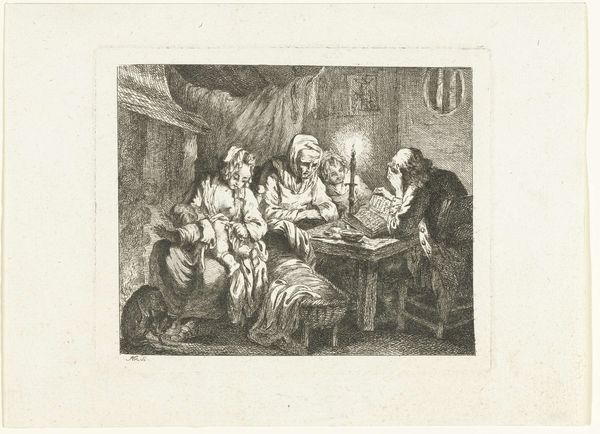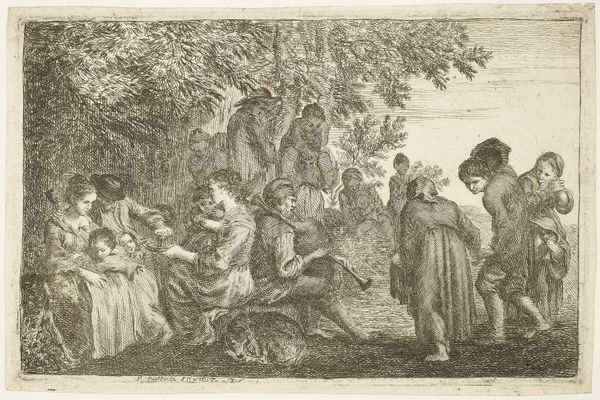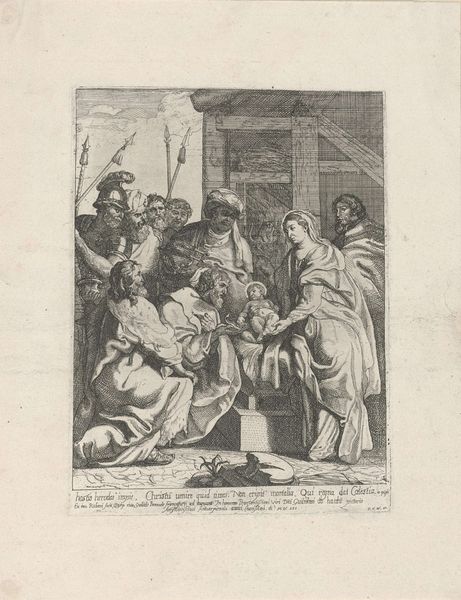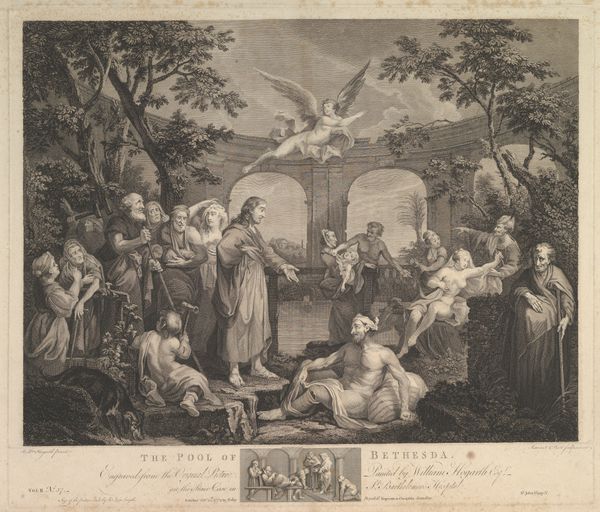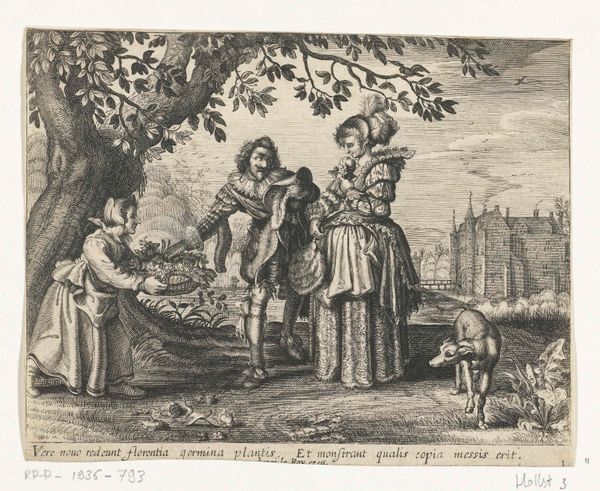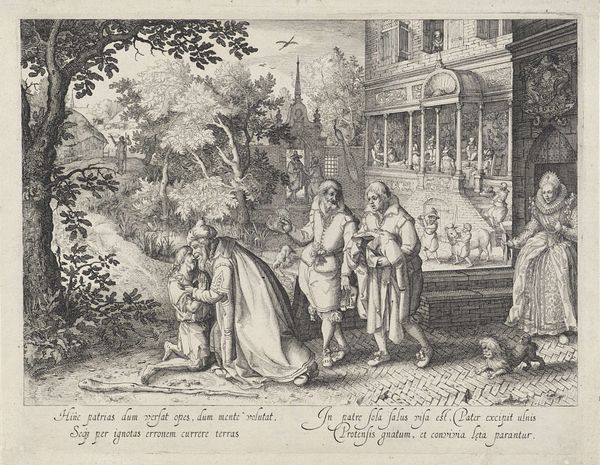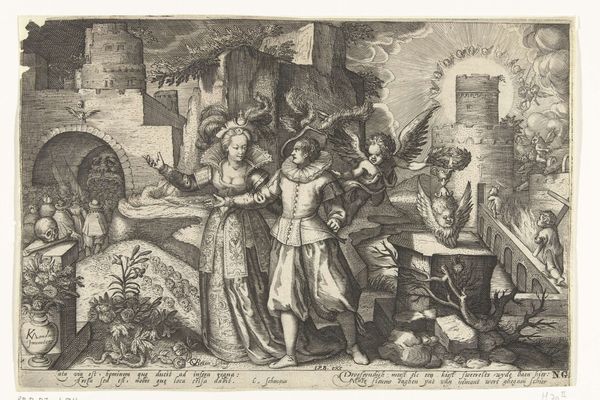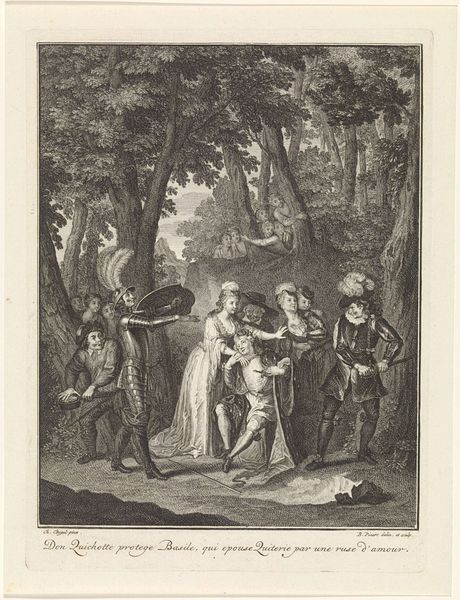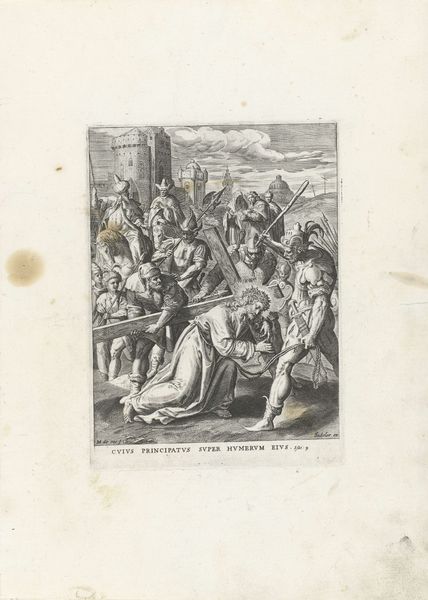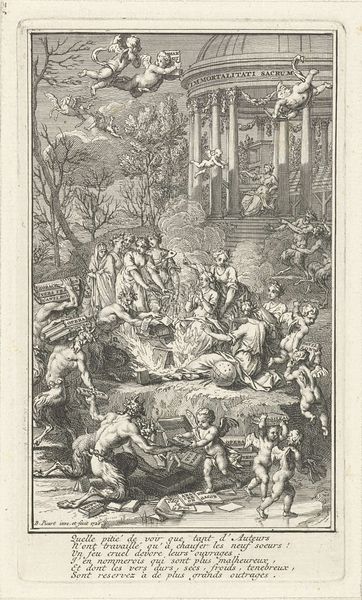
engraving
#
narrative-art
#
dutch-golden-age
#
figuration
#
line
#
genre-painting
#
engraving
Dimensions: height 178 mm, width 236 mm
Copyright: Rijks Museum: Open Domain
Curator: This engraving is titled "Liereman" and was created by Claes Jansz. Visscher in 1607. It is currently held at the Rijksmuseum. It depicts a busy, perhaps even chaotic, village scene. Editor: My immediate impression is one of contained exuberance. The sharp lines of the engraving, the multitude of figures, create this very lively feel within the small picture frame. Curator: Visscher was known for his genre scenes and landscapes, offering glimpses into 17th-century Dutch life. What's fascinating here is how the scene, seemingly a simple portrayal of village folk, subtly comments on social hierarchies and morals. Look at how he groups the characters, placing emphasis on certain interactions to create a complex social commentary. Editor: Agreed. I'm especially drawn to the bagpiper—the "Liereman" himself—who’s the apparent center of attention. His craft, his music, literally draws a crowd and thus a form of consumption takes place. And those children grasping at his clothing, are they paying for his performance or robbing the poor fellow blind? Curator: That's precisely the point. It appears that those children, possibly incited by an adult conspirator are pilfering from the musician, while a householder seems to be offering a handout as he is distracted. Note that in the original Dutch text beneath the picture we can infer a satirical critique of exploitation hidden beneath a veneer of generosity and civic engagement. The materiality of generosity meets the reality of thievery. Editor: Indeed, the work speaks to a vibrant visual culture, showcasing labor practices and forms of exchange that characterized Dutch society. These weren't romanticized idylls; they were snapshots of lived experience, often reflecting tensions inherent in the economic structures. The artist's labour of creation becomes almost secondary here: the production becomes all. Curator: It provides an invaluable record, and offers great perspective as to how image-making itself played a role in shaping perceptions of society. What stories did these types of genre scenes aim to tell? How did they influence moral consciousness? Editor: "Liereman" is a piece ripe with observations about the society, consumption and labor present in 17th century Dutch life. The close examination of its materials, tools and social themes invites further inquiry and debate about the era's foundations.
Comments
No comments
Be the first to comment and join the conversation on the ultimate creative platform.

